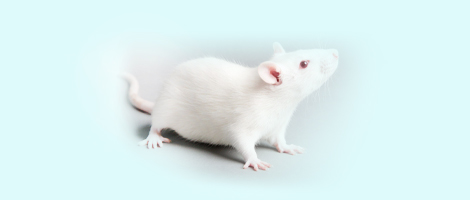[1] KOO J H, KANG E B, CHO J Y.Resistance exercise improves mitochondrial quality control in a rat model of sporadic inclusion body myositis[J]. Gerontology, 2019, 65(3):240-252. DOI:10.1159/000494723.
[2] BARBOSA M R, SHIGUEMOTO G E, TOMAZ L M, et al.Resistance training and ovariectomy: Antagonic effects in mitochondrial biogenesis markers in rat skeletal muscle[J]. Int J Sports Med, 2016, 37(11):841-848. DOI:10.1055/s-0042-107247.
[3] 胡敏, 邹亮畴, 刘承宜, 等. 大鼠抗阻训练模型的归类与分析[J]. 广州体育学院学报, 2009, 29(5):91-96. DOI:10.13830/j.cnki.cn44-1129/g8.2009.05.001.
[4] ATO S, KIDO K, SASE K, et al.Response of resistance exercise-induced muscle protein synthesis and skeletal muscle hypertrophy are not enhanced after disuse muscle atrophy in rat[J]. Front Physiol, 2020, 11:469. DOI:10.3389/fphys.2020.00469.
[5] 闫万军, 赵斌, 刘丰彬, 等. 负重跑训练对老龄大鼠肌肉丢失的影响[J]. 中国体育科技, 2009, 45(4):120-124. DOI:10.16470/j.csst.2009.04.001.
[6] MARQUETI R C, DURIGAN J L Q, OLIVEIRA A J S, et al. Effects of aging and resistance training in rat tendon remodeling[J]. FASEB J, 2018, 32(1):353-368. DOI:10.1096/fj.201700543r.
[7] 林文弢, 王震, 翁锡全, 等. 抗阻训练对衰老大鼠线粒体介导腓肠肌细胞凋亡通路相关因子表达影响的研究[J]. 中国运动医学杂志, 2014, 33(10):994-997. DOI:10.16038/j.1000-6710.2014.10.011.
[8] 王震, 林文弢, 翁锡全, 等. 抗阻训练对老龄大鼠腓肠肌Ca2+及线粒体膜电位的影响[J]. 广州体育学院学报, 2014, 34(2):85-88. DOI:10.13830/j.cnki.cn44-1129/g8.2014.02.024.
[9] WILLARDSON J M.A brief review: Factors affecting the length of the rest interval between resistance exercise sets[J]. J Strength Cond Res, 2006, 20(4):978-984. DOI:10.1519/R-17995.1.
[10] SABIDO R, HERN NDEZ-DAVÓJ L, CAPDEPON L, et al. How are mechanical, physiological, and perceptual variables affected by the rest interval between sets during a flywheel resistance session?[J]. Front Physiol, 2020, 11:663. DOI:10.3389/fphys.2020.00663.
[11] 冯钰, 程泽鹏, 史仍飞. 骨骼肌肥大动物模型的研究进展[J]. 中国体育科技, 2017, 53(6):79-84. DOI:10.16470/j.csst.201706009.
[12] 任飞, 胡敏, 潘慧文, 等. 一种新型大鼠抗阻训练模型的建立[J]. 实验动物科学, 2011, 28(1):52-53,59. DOI:10.3969/j.issn.1006-6179.2011.01.016.
[13] 苏艳红, 袁乾坤, 肖蓉, 等. 抗阻训练对增龄大鼠骨骼肌线粒体功能的影响[J]. 中国应用生理学杂志, 2020, 36(2):165-170,175. DOI:10.12047/j.cjap.5861.2020.037.
[14] 林文弢. 运动生物化学[M]. 北京: 高等教育出版社, 2019.
[15] NETO W K, CIENA A P, ANARUMA C A, et al.Vertical climbing for rodent resistance training: a discussion about training parameters[J]. Int J Sports Sci, 2016, 2016(61A):36-49. DOI:10.5923/s.sports.201601.07.
[16] CONSITT L A, DUDLEY C, SAXENA G.Impact of endurance and resistance training on skeletal muscle glucose metabolism in older adults[J]. Nutrients, 2019, 11(11):2636. DOI:10.3390/nu11112636.
[17] NICASTRO H, ZANCHI N E, DA LUZ C R, et al. An experimental model for resistance exercise in rodents[J]. J Biomed Biotechnol, 2012, 2012:457065. DOI:10.1155/2012/457065.
[18] DOS SANTOS J L, DANTAS R E, LIMA C A, et al. Protective effect of a hydroethanolic extract from Bowdichia virgilioides on muscular damage and oxidative stress caused by strenuous resistance training in rats[J]. J Int Soc Sports Nutr, 2014, 11(1):58. DOI:10.1186/s12970-014-0058-3.
[19] TAKEGAKI J, OGASAWARA R, KOTANI T, et al.Influence of shortened recovery between resistance exercise sessions on muscle-hypertrophic effect in rat skeletal muscle[J]. Physiol Rep, 2019, 7(13): e14155. DOI:10.14814/phy2.14155.
[20] TAVASSOLI H, HEIDARIANPOUR A, HEDAYATI M.The effects of resistance exercise training followed by de-training on irisin and some metabolic parameters in type 2 diabetic rat model[J]. Arch Physiol Biochem, 2019:1-8. DOI:10.1080/13813455.2019.1673432. |






